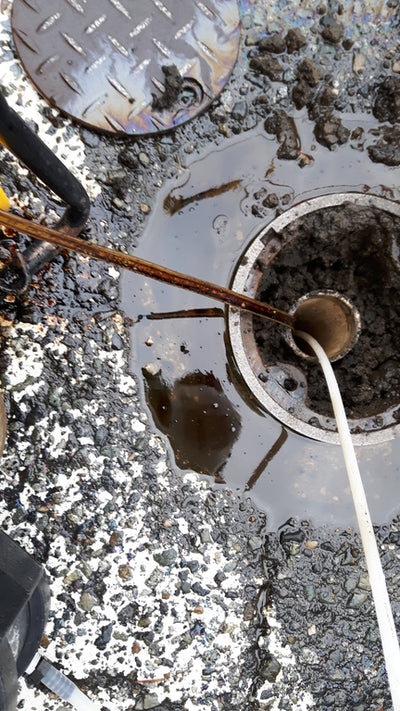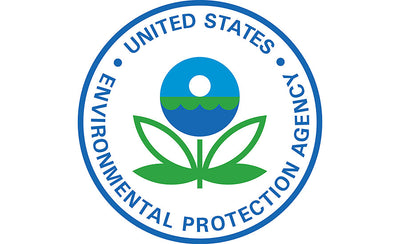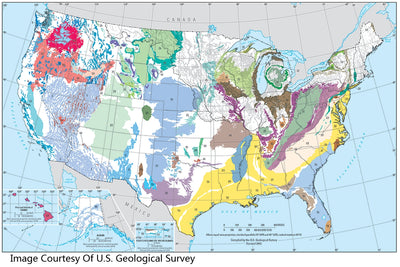Water Quality InformationWritten By Actual Experts
RSSUranium in Drinking Water: What You Need to Know

Military Bases Have High Concentrations of PFAS Chemicals

***Updated 8/29/18 to include video***
Analies Dyjak | Policy Nerd
Per and Polyfluoroalkyl Substances (PFAS) have been receiving a ton of media attention throughout this past year. PFAS are a category of toxic contaminants that have invaded public and private drinking water systems across the entire country. Military bases are extremely susceptible to this type of contamination because of necessary on-base activities. If you would like to learn more about what PFAS are, their health effects, and if they're regulated, please click here.
Why Do Military Bases Have High Concentrations of Per and Polyfluoroalkyl Substances (PFAS)?
Military bases have historically had issues with pollution, due to the nature of on-base activities. Municipal fire departments also travel to nearby military bases because they provide an open, secure area to train. So not only are military personnel being directly exposed to PFAS chemicals in water, but so are local fire departments. The Department of Defence isn’t necessarily to blame for the high rates of contamination of PFAS on military bases. The Manufacturers of PFAS-containing fire fighting foam who actively sell to the DOD are greatly at fault. Because there is no effective alternative on the market, the military has no choice but to continue purchasing and using these products. Unlike many other countries, the United States doesn’t use the precautionary principle in chemical manufacturing. This means that chemicals are introduced to the market before toxicological due diligence is completed. Most of the time it takes someone getting extremely sick for manufacturers to even begin to pay attention.
More often than not, military bases have their own underground private wells that provide drinking water to families living on base, rather than being apart of a public drinking water system. Fire fighting foam can either directly percolate into soil, or run off into surrounding surface water sources. Water from contaminated soil naturally recharges on-base drinking water wells, which families consume on a daily basis.
What Is The Department of Defense Doing About Per and Polyfluoroalkyl Substances (PFAS) on Military Bases?
The most recent data provided by the DOD stated that 99% people receiving non-DOD-treated water were served by systems with no violations, whereas only 89% of people receiving DOD-treated water were served by systems with no violations. It’s important to note that these data are from bases that voluntarily tested for PFAS chemicals in water, but they do however reiterate that military bases have higher concentrations of this contaminant than other areas in the country. In October of 2017, the US Government Accountability Office reported that the Department of Defense has taken action on PFAS. DOD has directly shut down wells or provided filtration to 11 military installations. This is definitely a step in the right direction, but there are over 400 military bases in the United States that are still contaminated. Approximately 3 million people in the US drink water provided by the DOD. Not only are active military personnel at risk, husbands, wives and children are being adversely impacted by PFAS chemicals in water. Again, manufacturers of these dangerous chemicals are mostly to blame for such high concentrations of PFAS contamination on military bases.
What Are Public Officials Doing About Per and Polyfluoroalkyl Substances (PFAS)?
EPA set a Lifetime Health Advisory Level of 70 parts per trillion for both PFOA and PFOS. The rule of thumb for PFAS is that the sum of the category of contaminants should be no higher than 70 parts per trillion. ATSDR believes this level should be reduced to 20 parts per trillion for drinking water. Again, Lifetime Health Advisory Levels and Minimum Risk Levels are non-enforceable limits that municipalities are not required to follow. DOD has not developed their own standard for PFAS in drinking water and therefore follow the non-enforceable national level of 70 parts per trillion. DOD is not at all incentivized to create a standard or even test for PFAS, because of the outrageous mitigation expenses.
Other Articles We Think You Might Enjoy:PFAS: What You Need To Know
Recap of EPA's 2018 PFAS National Leadership Summit
PFAS: Toxicological Profile
Orthophosphate and Lead Contamination in Drinking Water
Analies Dyjak | Policy Nerd
Lead contamination in drinking water is a huge problem for municipalities with an older infrastructure. Lead contamination occurs when water comes in contact with lead pipes. This article discusses a common additive used to combat lead pipe corrosion.
What is Orthophosphate?
Orthophosphate is a common corrosion inhibitor used by water suppliers to prevent lead pipes from leaching. When orthophosphate water treatment is added to a water source, it reacts with lead to create a mineral-like crust inside of the lead pipe. This crust acts as a coating which prevents further lead corrosion. The use of orthophosphate treatment in drinking water became popularized in 2001, during the lead crisis in Washington, D.C. Lead contamination in many cities including D.C. and Flint, occurs when a city’s water becomes more corrosive, which can allow for lead from pipes to leach into the drinking water supply. When the lead problem initially occurred, cities such as Flint, Michigan, Durham and Greenville, North Carolina, and Jackson, Mississippi didn’t learn from D.C’s mistakes and all had lead outbreaks.
Does Orthophosphate Fix Lead Contamination?
It certainly can. Once the protective layer is formed, cities can find that lead concentrations in the water drop by 90%. However, Orthophosphate is somewhat of a bandaid to temporarily fix the presence of lead in drinking water. For example, if the protective layer is corroded away or otherwise disturbed (e.g. in the case of a partial service line replacement or the water’s corrosivity changes), lead can leach back into the water. Finally, not all municipalities are adding orthophosphate to drinking water because of its cost. If you have any questions regarding lead prevention in drinking water, send us an email at hello@hydroviv.com.
Other Articles We Think You Might Enjoy:Lead In Drinking Water: What You Need To Know
Lead and Copper Rule
Things To Know Before Replacing Your Home's Lead Service Pipes
Chemours To Pay $13 Million to NC DEQ for PFAS Pollution

Analies Dyjak | Policy Nerd
Our Water Nerds have been closely following the environmental and public health disaster in North Carolina for a while now. This article provides an overview of the recent consent order, and some background information on what's going on in North Carolina.
The Chemours Plant in Fayetteville, North Carolina has been discharging various per and polyfluoroalkyl substances (also known as PFAS) for decades. PFAS are a category of emerging contaminants that are found in some of the most popular consumer products such as Scotchgard, Gore-Tex, Teflon, and other stain/water resistant products. PFAS is also an important ingredient in firefighting foam, which has been a major source of water contamination throughout the country. In recent years, a replacement chemical for PFOA called GenX has dominated the conversation, particularly in North Carolina. In November 2018, EPA admitted that GenX is “suggestive” of cancer, which is significant for residents who have been unknowingly exposed.
$13 Million Awarded to NCDEQ
Chemours is awarding $13 million to the North Carolina Department of Environmental Quality in the form of civil penalties and investigative costs. In comparison to other PFAS-related settlements, this is by far one of the smallest. In early 2018, 3M paid the state of Minnesota $850 Million in environmental degradation. In 2017, DuPont was involved in a $670.7 million settlement in the Mid-Ohio Valley region for PFAS water contamination.
Overview Of The Consent Order
The Consent Order clearly lays out a timeline of air emission goals and wastewater discharge stipulations. Chemours’ National Pollution Discharge Elimination System (NPDES) permit was revoked in early 2017 and the new Consent Order prohibits any sort of wastewater discharge until a NPDES permit is reallocated. Chemours must also create laboratory methods and test standards for all PFAS compounds released by the Fayetteville plant. Basic remediation plans must be agreed upon by the North Carolina Department of Environmental Quality, North Carolina River Keepers, and Chemours. Chemours will also pay for water filtration for water filtration for residents on private wells. Concentrations of GenX must be above 140 parts per trillion or any updated health advisory, in order to be eligible for a filter. GenX is not the only PFAS compound detected in the Cape Fear area, and the consent order addresses that. the Residents can also be eligible for filtration if other PFAS compounds are detected in well water over 10 parts per trillion individually, and 70 parts per trillion combined. NCDEQ is currently seeking public comment regarding the recent settlement.
How Are Cape Fear Residents Responding?
Cape Fear Public Utility Authority (CFPUA) created a comprehensive breakdown of the Chemours consent order. The utility provider acknowledged that the settlement did not go far enough to cover the scope of GenX and PFAS water contamination in the Cape Fear area. In a press release, CFPUA talked about how the consent order did not acknowledge the PFAS sediment pollution at the bottom of the Cape Fear River. Any sort of dredge or fill could disturb the sediment and create GenX concentrations to sky rocket in drinking water. Local non-profit groups are also not in agreement with the Chemours settlement because they believe it does not go far enough to mitigate the scope of PFAS water contamination. The current consent order places most of the mitigative costs water utility providers which would of course be paid for by taxpayers.
Our Take:
In early November of 2018, EPA released a draft toxicity report for GenX, proposing a threshold of 80 parts per trillion for drinking water. The concentration deemed “safe” by North Carolina and Chemours is almost two times higher than what the EPA is proposing as safe. Health and regulatory agencies know very little about the adverse health effects of GenX and other PFAS compounds. It’s up to consumers to decide the best course of action to protect themselves and their families.
Other Articles We Think You Might Enjoy:EPA Admits That GenX Is Linked To Cancer
Military Bases and PFAS
Toxicological Profile For PFAS
What You Need To Know About Groundwater

Analies Dyjak | Hydroviv Policy Analyst
Updated 3/13/2024
What Is Groundwater?
Groundwater is submerged water located among soils, cracks and pores, beneath the surface of the earth. Groundwater travels down a gradient through geological formations and is stored in aquifers. Aquifers act as holding tanks for readily available drinking water. Rain patterns, hydrology, and ice/snow melt are the primary factors that affect how quickly a groundwater supply is replenished, also known as recharge. The recharge rate is how quickly aquifers are able to replenish the groundwater level after an influx of water.
Why Is Groundwater So Important?
It’s simple: It supplies drinking water to millions of Americans whose municipalities draw from groundwater sources (e.g. Miami, Tucson, Lincoln), as well as the 15% of people living in the U.S that use private wells as their drinking water source. In fact, the US Geological Survey estimates that 140 million people, or about 40% of the nation's population get their drinking water from groundwater sources, which include both municipal (city) water and private wells. Groundwater is also a major supplier of surface water in oceans, lakes, streams, ponds and wetlands. Crucial habitats and ecosystems are dependent on an influx of healthy groundwater, as well as surface water for public drinking water usage.
How Can Groundwater Become Polluted?
There are two major ways that groundwater can accumulate toxic chemicals:
- Natural-occurring chemicals: In some regions of the country, things like arsenic, radium, and uranium are naturally found in the rocks that come in contact with groundwater.
- Man-made Pollution: Groundwater can also become contaminated by human activities including: agriculture, industry, landfills, localized pollution, and anything that involves discharging effluent into a surrounding waterway. Polluted water seeps through soil until it reaches the water table, where it can travel freely depending on the hydrology and permeability of an aquifer. Contaminants that are particularly soluble in water (such as PFAS and 1,4-dioxane) can migrate into groundwater aquifers that serve as drinking water sources. Polluted groundwater then slowly travels through aquifers until reaching nearby surface water or being pumped through a well and consumed as drinking water.
Are There Federal Regulations That Protect Groundwater?
The Ground Water Rule was created in 2006 by the U.S Environmental Protection Agency to improve and inspect drinking water sources that may be potentially polluted by fecal contamination. This rule does not address human-made toxic and carcinogenic groundwater contamination. Additionally, the Ground Water Rule is specific to public water systems and excludes private wells.
The Federal Government does not oversee or have anything to do with regulating private wells. In fact, private wells aren’t even regulated by the Safe Drinking Water Act. This means that it’s at the discretion of the homeowner to determine if their private well water is safe for consumption. Testing private well water is extremely expensive and at times ineffective if the contamination type and concentration is continuously changing. Additionally, The Federal Government doesn’t regulate many of the contaminants in questions today.
How Can I Learn More About My Water?
If you have any questions about groundwater and regional water information, we encourage you to take advantage of Hydroviv’s “Help No Matter What” approach to technical support, where we will help you, even if you have no desire to purchase one of our water filters. Truth be told, we have access to a much larger pool of water quality data than is easily accessible to the general public. You can reach our water nerds by emailing hello@hydroviv.com or opening a Live Chat window in the bottom corner of this screen.
Other Articles We Think You'll Enjoy
Should I Worry About Arsenic Contamination If I Have A Groundwater Source?What Do I Need To Know About Recent News Reports On Radium?
How Do I Know If My Well Is Contaminated?





